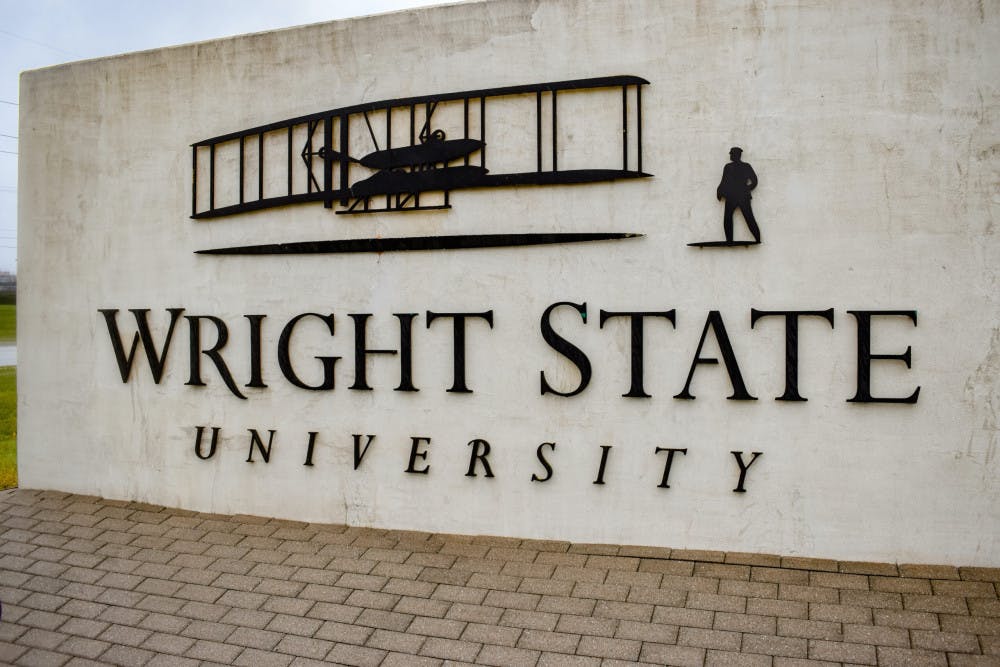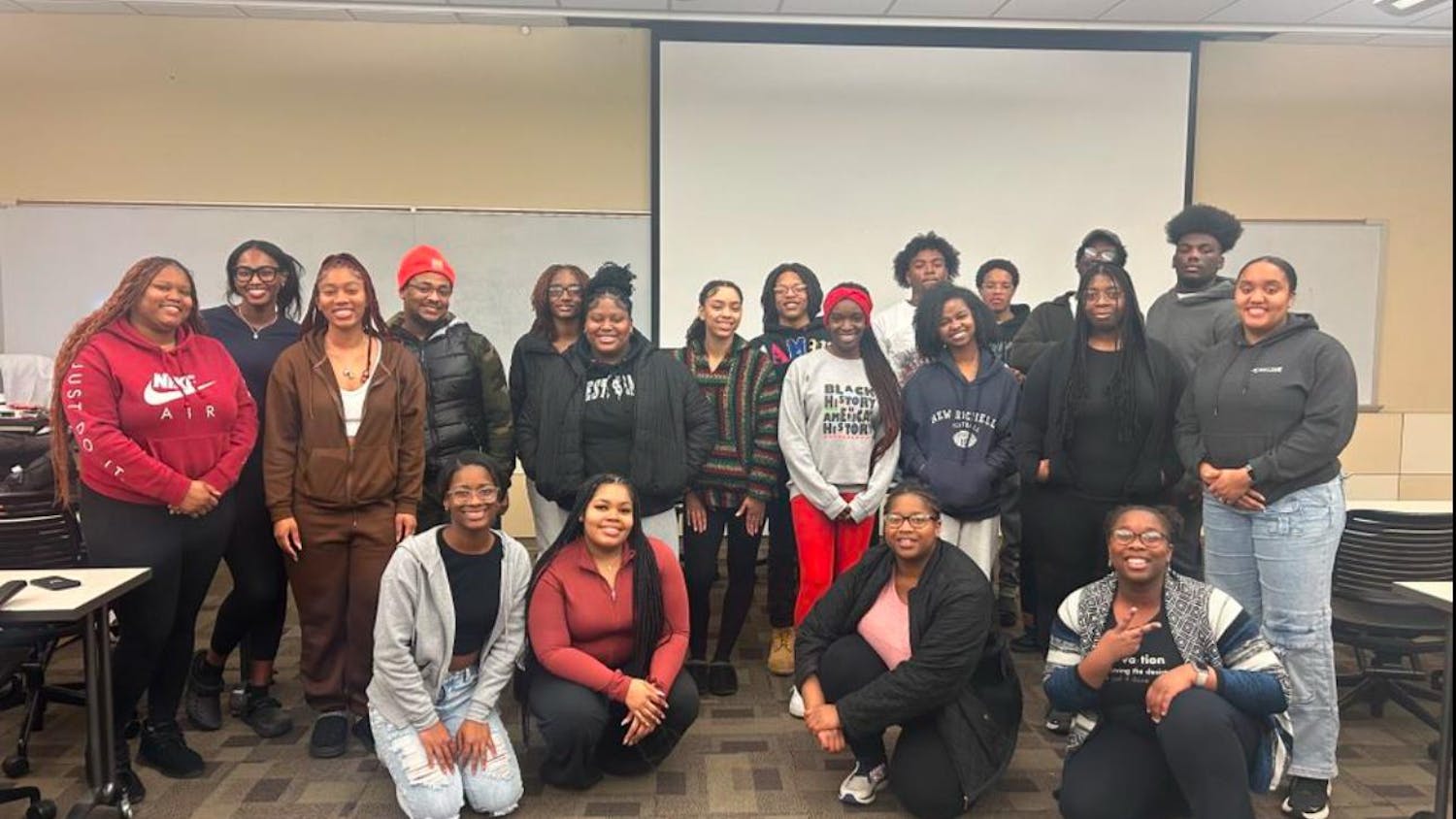Wright State University | Photo by Grace Ramsdell | Edited by Kayli Thompson | The Wright State Guardian
The Wright State University Board of Trustees approved a $227.6 million budget with a $10.8 million deficit for FY22. However, the university also reported a projected surplus of $30.7 million for FY21.
The lengthy June 18 committee discussed topics including direct payments to students via the American Rescue Plan Act. In addition, committees conversed on bond refinancing for current university debt, tuition, staff raises, and academic initiatives.
Fiscal Year 2022 Budget
The new budget includes a nearly $11 million deficit, decreases in research funding, a 2.5% pay increase for all employees who were not contractually guaranteed increases this year, and a tuition increase for incoming students.
Tuition Increases and Enrollment
The trustees did not publicize the tuition increase amount, and the university has not disclosed the exact amount student may expect. Although, the university is barred from increasing tuition by more than 2%, according to state law.

In the email to the campus community, the university said, “Wright State continues to offer one of the lowest tuition rates among Ohio's four-year universities.”
The passage of these measures also serves as an approval for the decreased housing rates for the academic year 2021-2022.
Many factors caused these changes, including decreased campus activity due to the global pandemic and declining enrollment rates.
Enrollment for Fall 2021 is expected to drop by 9.4%, causing significant losses in tuition revenue. The university estimates that enrollment issues will persist and impact budget propositions for the coming years.
According to a communications email, this is part of a three-year budget plan that “guides operations, realigns expenditures with revenues, and supports the university’s academic mission as it emerges from the coronavirus pandemic.”
Numbers among recent high school graduates nationwide continue to be meager, according to the presentation. Executive Vice President and Chief Operating Officer Greg Sample expressed that the university will focus recruitment efforts in surrounding Ohio counties, coined “Raider Country.”
He and President Sue Edwards were optimistic about certain counties, such as Montgomery and Greene, which show a positive increase in high school graduates. Sample also signaled to include Warren County, which he noted has nearly double-digit growth in high school graduates.
President Edwards announced a new scholarship opportunity for first-year students entering directly from high school to combat declining enrollment. This thousand-dollar award, granted on a need-based requirement, provides additional financial support to students and incentivizes WSU enrollment. According to the university, over 34% of new direct from high school students will be eligible for the scholarship.
“It is my true belief that a culture that is truly focused on understanding and meeting the needs of our students will always be one of success,” President Edwards said.
Operating Budget
Despite these obstacles, the board and Edwards are optimistic about the budget for FY22. A campus-wide announcement noted revenue has increased from $210 million in FY21 to almost $227.7 million in FY22.
In addition to increasing revenue, expenses for the new year are projected to decline from $241 million in FY21 to $238.6 million in FY22.
The university has trimmed about $130 million from its operating budget in the last five years. It will continue to focus on critical needs during the new fiscal year, according to the announcement.
Fiscal Year 2021 Updates
During the Finance, Audit, Governance and Compliance Committee meeting, university officials gave their regular monthly finance update to the trustees.
Revenue
Sommer Todd, director of University Fiscal Services, noted no projected revenue changes for FY 2021. Tuition and fee revenue is $12.5 million above budget; state appropriations are $16.9 million.
“Sales and Service, and Gifts and Contributions and Other revenues were revised downward as events were postponed, canceled or held virtually. These revenues have been adjusted downward by $6 million overall,” Todd said in a written report to the trustees. “Overall, total revenues are estimated to be $30.9 million higher than initially projected.”
Expenses
The director explained that the recent forecasts presented to the board were prepared by the university fiscal services managers, which are responsible for budgetary management across the university’s units.
“Several expenditure areas are lower than normal as a result of remote operations for most of the fiscal year,” she said. “Further, the focus on critical expenses only, attrition, and reimbursements from Higher Education Emergency Relief Funds are also reflected in the $7.6 million downward revision of total expenditures relative to [the] estimate reported as of March 2021.”
Compensation has been adjusted upward $2.5 million to reflect -$6.7 million in attrition and strategic hiring initiatives and an addition of $9 million to support faculty retrenchment plans for FY21.
Contracted labor, supplies, travel and events, and maintenance repairs and utility categories are adjusted downward by $4.3 million due to limited activity permitted on Wright State’s campuses.
The university has also greatly benefited from federal relief grants, three of which yielded multi-million stimulus drawdowns for the university to send to students, reimburse Covid-19 expenses and improve online learning environments for future terms. These were recorded as a downward revision to “other expenses” of $6 million.
According to the report, total operating expenses are estimated to be $ 30.6 million lower than the budget.
Todd also indicated that May saw an uptick in spending as the university prepares for normal operations.
Investments and Cash
The university has also indicated an enhanced cash increase on hand, a stark difference from FY21 projections and a constantly growing concern since the university’s financial crisis. The rise of cash on hand over FY20 is 69 days—estimating a total of 175 days of cash on hand.
According to Don Borowy, directory of Treasury Services, for the full fiscal year, the closing cash and investment balance at June 30, 2021, is projected to be $119.1 million, adding $35 million over the prior year.
“The beginning balance of cash and investments for FY2021 was $11.7 million higher than the beginning of FY2020 ($84.1 vs. $72.4),” Borowy said in a written report to the trustees. “Ending cash and investments as of May 31, 2021 was $123.3 million, an increase of $35.7 million over May 31, 2020. The $123.3 million includes approximately $1.6 million of Nutter Center advance ticket sales for events which will be paid out in FY22.”
Investment income was also up $7.5 million, principally due to the $8.8 million Venture Investment Associates private equity valuation increase, according to Borowy.
Overall
The university initially projected a deficit of nearly $30.7 million in July 2020. Today, the university’s budget numbers show a surplus of $30.7 million—a $61.7 million increase of the forecasted initial numbers.
At multiple times, trustees complimented the university’s finance team for their work during the pandemic, some even candidly joking about finding ways to use the increased cash.
“It just seems having $90 million in cash is excessive...in this rate environment, it’s almost like putting it in the mattress,” Fecher said.
Fitzpatrick quipped back, “...the mattress isn’t too bad these days.”
Resolutions
American Rescue Plan
As granted by the American Rescue Plan, signed by President Biden on March 11, the Board of Trustees authorized the expense of $14,508,548 in Higher Education Relief Funds to students in direct aid.
The trustees also authorized $14,213,093 in Higher Education Relief Funds to “defray expenses associated with [the] coronavirus...”
Bond Financing
The board also authorized the issuance of general receipts bonds “in a maximum aggregate principal amount not to exceed $44,000,000” to:
- Refund certain bonds to achieve savings, and;
- Pay costs of issuing the bonds, authorizing a supplemental trust agreement and authorizing related documents.
The purpose of the initiative would be to refinance upcoming due debt at a lower interest rate, according to Burhan Kawosa, interim associate vice president for Financial Operations.
Although it was unclear of any initial reservations of the bond refinancing, Trustee Sean Fitzpatrick was the sole minority during the vote. His seven other colleagues voted in the affirmative.
Athletic Training Program
In addition to the budget committee meeting, the Academic and Student Affairs Committee met to pass a resolution that would dissolve the undergraduate program of Athletic Training.
The resolution introduced by Interim Provost Oliver Evans would transform the Bachelor of Science in Athletic Training into a Master of Science.
The Commission on Accreditation of Athletic Training Education (CAATE) established that in 2015 it no longer recognizes accreditation for an Athletic Training undergraduate program.
Students who currently have credits in this program must continue into the masters’ program to get an athletic training degree. The new program, housed in the new College of Health, Education, and Human Services, will not require any new staff or additional program material.
The Ohio Department must approve this resolution approved by the entire Board of Trustees now of Higher Education.
Non-Resident Graduate Tuition Surcharge
Continuing in Fall 2021, surcharges for out-of-state graduate students, who received their bachelor’s degree in Ohio, will remain at in-state tuition levels.
In addition to undergraduate recruitment, the board hopes to increase graduate school recruitment by passing a resolution to renew these reductions in graduate school tuition.
Vice Provost for Academic Affairs and Dean of the Graduate School Barry Milligan introduced the resolution, with the board quickly approving the measure. The resolution now must be sent to the Ohio Department of Higher Education, where it has already gained support and is likely to pass the review process.
Contracts $500 Thousand and Up
The board approved various contracts for FY22 over $500 thousand. The contracts ranged from multiple categories, including infrastructure, real estate and academic support.
The contracts approved without contention: $600 thousand for janitorial services, $2.45 million for gas utilities, $925 thousand for electric utilities, $500 thousand for human resources temporary staffing, $2.2 million for OhioLINK, $875 thousand to the Inter-University Council for risk management and insurance, and $5.4 million to Wright State Physicians.
Though approved, the most significant point of contention came from Trustee Fitzpatrick who asked numerous questions regarding the university’s proposed $2.2 million in leases to Double Bowler Properties.
Sample suggested that, in reality, he expects the university to spend less than $1 million in leases to the properties. He noted the corporation, a WSU affiliate but a third-party entity, also held a mortgage obligation to the remaining properties.
The university plans to offload all remaining Double Bowler properties by the end of FY22. From there, the university would dissolve the corporation.
Trustee Fitzpatrick offered another perspective: don’t pay the lease and let the corporation go into foreclosure. Currently, various university units utilize the leased space, including departments from the Boonshoft School of Medicine.
According to Sample and Sean Culley, deputy general counsel, the university estimates to break even on the remaining properties but stressed that they did not have calculable figures at the time.
In the end, Trustees Fitzpatrick and Bruce Langos voted against the resolution for all contracts. The vote was 6–2 in the affirmative.
The Board of Trustees also entered an executive session shortly after the beginning of the budget presentation to discuss undisclosed personnel matters and pending or imminent litigation. The trustees did not announce any decisions or updates from the session.












